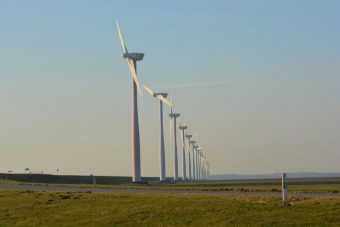
Google-owner Alphabet Inc. has said it expects to begin receiving power by early September from what is expected to be Norway’s largest onshore wind farm, according to reports.
The US tech giant last year signed a 12-year deal to purchase 100 per cent of the output from the 160MW project, which is located in the region surrounding the ilmenite mines at Tellenes in the municipalities of Sokndal and Lund in Norway.
Once completed it will encompass 50 turbines and will be operated by Swedish renewables firm Arise.
Reuters reported last week that the project’s first turbine is expected to start generating power this month with the energy initially being sold on to the Nord Pool power exchange.
However, from September, all the power from the wind farm is expected to be used to help power Google’s four European data centres in Finland, Belgium, the Netherlands, and Ireland.
A Google spokesperson told the news agency the firm plans to purchase power from the wind farm as soon as it becomes fully operational “which we expect will take place in early September 2017”.
Meanwhile, Google has also reportedly bought the future output of a 22-turbine wind farm in Sweden, which is due to start operations in 2018 and will bring the total capacity of the tech giant’s renewable power purchases in Europe to 500MW.
Google and parent company Alphabet have been investing heavily in renewables in recent years, and in May Google teamed up with energy supplier E.ON to launch a solar power drive in Germany in order to help simplify and streamline the process for identifying the best rooftop solar sites.
The deals are part of a major trend that has seen a raft of Blue Chip firms, including many of the world’s tech giants, commit to sourcing 100 per cent renewable power over the coming decade.
Advocates of the renewables argue they offer corporate customers financial as well as environmental benefits, as projects allow them to sign long term contracts at guaranteed prices that hedge against future energy price volatility and potential increases in carbon taxes.
Source: businessgreen.com

